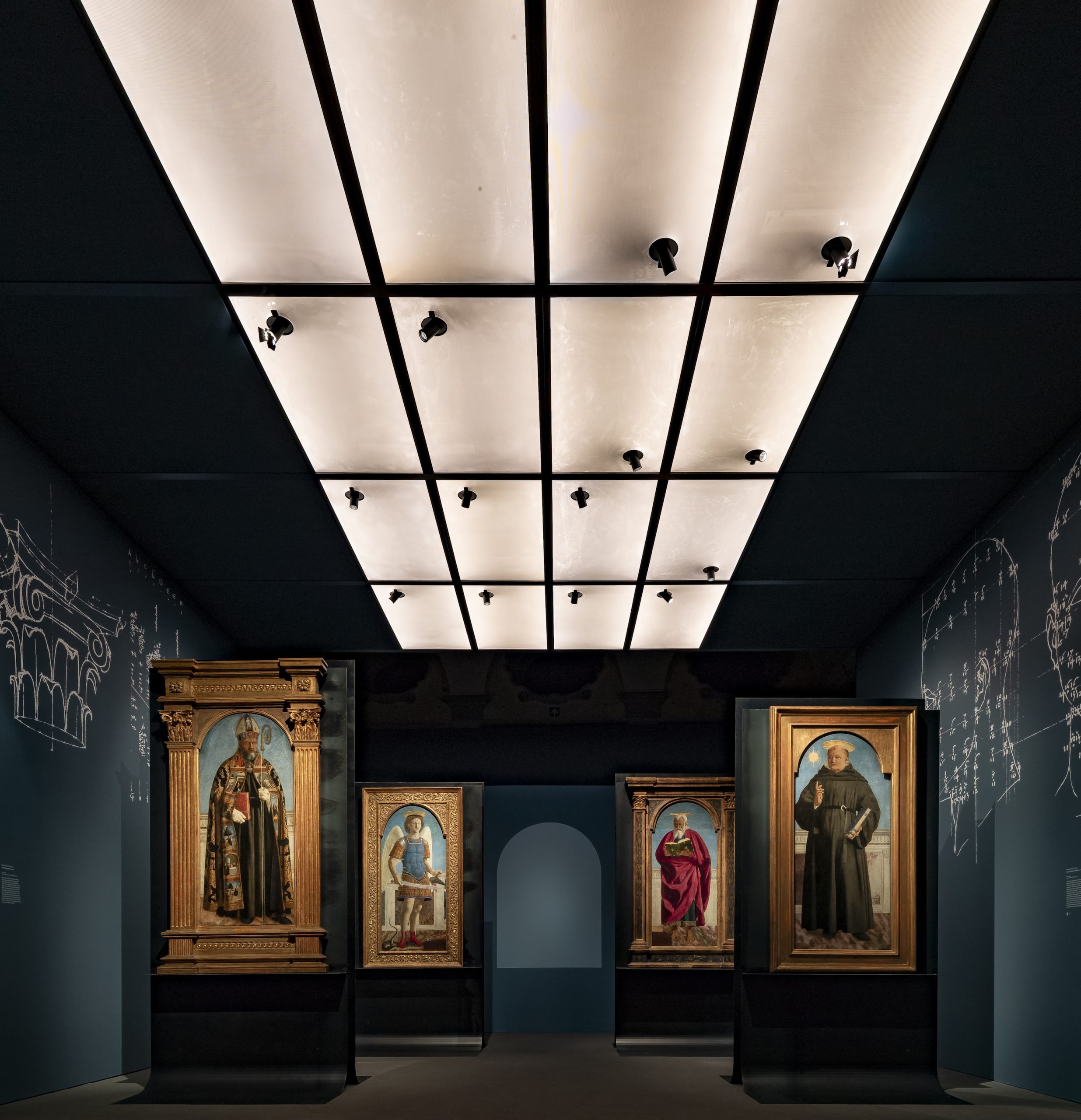
In 1454, the Augustinians in San Sepolcro wanted a grand polyptych for the high altar of their church. They commissioned hometown master Piero della Francesca for the task. It took Piero 12 years—Pope Nicholas V kept demanding and hogging his services at the Vatican—and stood as a magnificent demonstration of the painter’s talents.
Across 30 panels, Piero placed two saints on either of the Virgin and the surrounding predella was filled with New Testament scenes and Augustinian figures. The polyptych evidenced Piero’s mastery of space and light, as well as his familiarity with trendy Spanish painting.
Piero della Francesca, San Nicola da Tolentino (1454–69). Photo: Poldi Pezzoli Museum.
The popularity of such polyptychs didn’t last. By the end of the 16th century, it had been disassembled and sold off panel-by-panel.
Eight panels have survived and are scattered across five museums in Europe and the United States. For the past two decades, museums have tried, but failed, to reassemble Piero’s polyptych.
Piero della Francesca, Saint Michael the Archangel (1454–69). Photo: Poldi Pezzoli Museum.
Now, the Poldi Pezzoli Museum in Milan has succeeded. Through June 20, visitors will be able to enjoy what remains of the Augustinian Polyptych 555 years after it was painted.
The break came when Alessandra Quarto, the director of Poldi Pezzoli Museum, learned that New York’s Frick Collection, which owns four panels, would be closed for six months ahead of its 2024 grand reopening. The Frick proved willing leading to an exhibition that Quarto has called “the reunion of the century.”
Piero della Francesca, Saint Augustine (1454–69). Photo: Poldi Pezzoli Museum.
Milan holds Piero’s Saint Nicholas of Tolentino and with the Frick onboard, it proved possible to convince London’s National Gallery, Washington D.C.’s National Gallery of Art, and the Museum of Ancient Art in Lisbon to make the requisite loans.
The exhibition presents the four saints (St. Michael the Archangel, St. John the Evangelist, Saint Nicholas, and Saint Augustine) in a staggered formation with a blank space for the central panel.
Piero della Francesca, San Giovanni Evangelista (1454–69). Photo: Poldi Pezzoli Museum.
Curated by Machtelt Brüggen Israëls of the Rijksmuseum and Nathaniel Silver of Boston’s Isabella Stewart Gardner Museum, the exhibition also offered an opportunity to conduct diagnostic investigations on the panels. Studies revealed the central panel depicted the coronation of the Virgin, as opposed to a scene of Virgin and Child, as had long been assumed.
Piero della Francesca, The Crucifixion (1454–69). Photo: Poldi Pezzoli Museum.
This conclusion was reached through discovering traces of two wings on the panels flanking the centerpiece. The wings, one pink and one blue, were removed when the altarpiece was disassembled because it would have seemed incongruous. Furthermore, experts found a foot beneath a brocade dress on the panel depicting Michael the Archangel, which suggests a kneeling Virgin. Both details are consistent with period depictions of the Virgin’s coronation.
The four panels depicting the saints reappeared miraculously in Milan in the 1800s and organizers are hopeful the exhibition might prompt more to resurface.
“Piero della Francesca: The Augustinian Polyptych Reunited” is on view at the Poldi Pezzoli Museum, Via Alessandro Manzoni, 12, Milan, Italy, through June 24.